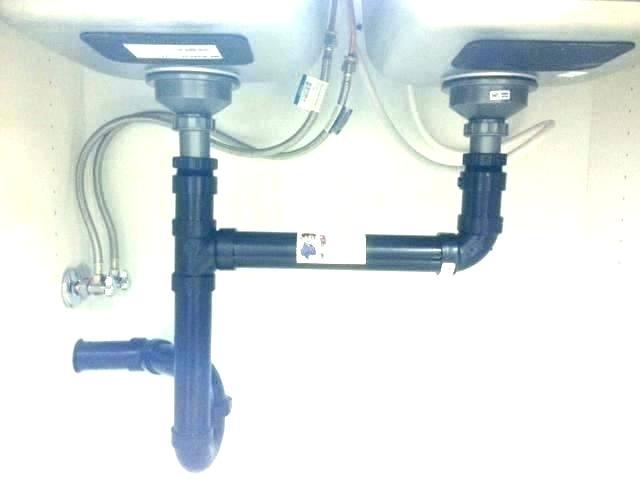Just about everyone is bound to have their own individual assumption about How to fix a pretty consistent leak from my garbage disposal.

Garbage disposals are important kitchen area home appliances that aid in dealing with food waste efficiently. However, a dripping waste disposal unit can be a discouraging and messy issue to manage. Thankfully, several leaks can be dealt with easily with a few straightforward actions. In this write-up, we will certainly talk about just how to deal with a leaking garbage disposal efficiently.
Intro
Waste disposal unit are mounted under kitchen area sinks and are developed to shred food waste into smaller sized items, permitting it to go through the plumbing system conveniently. While these gadgets are typically reliable, leaks can take place gradually because of wear and tear, loosened connections, or damages to the system.
Step-by-Step Guide to Fixing a Dripping Waste Disposal Unit
Shut off the Power
Before trying any type of repairs, make sure that the power to the waste disposal unit system is shut off to stop the risk of electrical shock.
Situate the Leakage
Recognize the specific area of the leakage and determine the reason
Tighten Links
Make use of a wrench to tighten up any loosened connections in between the disposal unit and the plumbing system.
Change Seals or Gaskets
If the leakage is due to used seals or gaskets, get rid of the old components and replace them with brand-new ones.
Patching Splits or Holes
For fractures or openings in the disposal device, usage epoxy or a suitable patching material to seal the damaged location.
Identifying the Source of the Leakage
Before attempting to take care of a dripping garbage disposal, it is vital to recognize the resource of the leakage. This can generally be done through visual inspection or by performing basic examinations.
Visual Evaluation
Examine the garbage disposal unit meticulously for any kind of indications of water leakage. Pay close attention to locations around seals, gaskets, and link points.
Testing for Leakages
One method to evaluate for leakages is by running water with the disposal device and checking for any kind of visible indicators of leak.
Common Sources Of Leaks in Garbage Disposals
Worn Seals and Gaskets
Seals and gaskets play a critical role in stopping water from dripping out of the garbage disposal. Gradually, these parts can degrade, leading to leaks around the disposal unit.
Loose Connections
The links in between the garbage disposal and the plumbing system can end up being loosened with time, creating water to leakage out throughout operation.
Cracks or Holes in the Disposal Device
Physical damages to the garbage disposal, such as fractures or holes in the housing, can likewise lead to leakages.
Tools and Materials Needed for Repairing a Leaking Garbage Disposal
Before beginning the repair work process, collect the essential devices and materials, including a screwdriver, flexible wrench, plumbing's putty, replacement seals or gaskets, and epoxy or patching material for repairing cracks or openings.
Testing the Waste Disposal Unit After Repair Service
When the repair is full, test the garbage disposal by running water with it to make sure that the leak has been resolved.
Preventive Upkeep Tips to Avoid Future Leakages
To prevent future leakages, it is necessary to carry out normal maintenance on your garbage disposal. This consists of keeping it clean, avoiding placing non-food things or hard items down the disposal, and occasionally checking for leaks or other concerns.
Final thought
Finally, fixing a leaking garbage disposal is a fairly straightforward process that can be completed with basic tools and materials. By adhering to the steps laid out in this article and practicing precautionary maintenance, you can keep your garbage disposal in good working condition and avoid costly repair work in the future.
What to Do About a Leaking Garbage Disposal
A leaking garbage disposal often goes unnoticed until you confront a sopping cabinet, a foul-smelling puddle, or an audible drip-drip-drip from the unit. The fix can be frustrating, too, because the leak can stem from a number of components in the system. Fortunately, with a little sleuthing, you can zero in on the leak and—depending on the exact location—stop the icky oozing and repair the component that caused it. Worst case scenario, if it turns out that the garbage disposal must be replaced, installing a new one is a reasonable do-it-yourself task for those with basic plumbing skills. Read on to keep the cash you’d otherwise hand over to a pro.
Prepare to find the leak
Prior to testing the garbage disposal for leaks, unplug it at the wall outlet and turn off the power from the breaker box to prevent electrical shock. Then insert a watertight sink stopper into your sink drain and wipe the unit dry with a clean cloth. In any handy container, mix a few drops of food coloring into a few cups of water, and pour the dyed water onto the sink stopper to help you locate the leak.
Investigate the source
the top, where the disposal meets the sink drain the side, where the dishwasher hose or main drain pipe connects to the disposal or the bottom of the unit Inspect each of these locations while gliding a light-colored rag over the unit; the dyed water will readily show on the rag and reveal the location of the leak. If a leak isn’t immediately apparent, remove the sink stopper and pour a few more cups of dyed water down the sink drain, then check for leaks again. Leaks near the top of the unit are more likely to show themselves while the sink is plugged, while side and bottom leaks are more noticeable while the sink is unplugged.
The metal sink flange that sits directly inside the sink drain is typically sealed around the top with plumber’s putty (a clay-like sealant) and then secured from under the sink with bolts. If the plumber’s putty deteriorates, or the bolts loosen, the flange can no longer form a watertight seal between the sink drain and the disposal—which could cause a leak at the top of the unit.
To reseal the leaky flange, you must first detach the garbage disposal. Start by loosening the screws securing the main drain pipe to the disposal, then loosen the screws in the metal clamp securing the dishwasher hose to the disposal and detach the drain pipe and dishwasher hose from the disposal. Loosen the screws in the mounting ring that connects the disposal to the metal mounting assembly beneath the sink, then pull down the disposal and carefully set it on a clean, dry surface. Loosen the bolts in the mounting assembly with a wrench, then pull down the mounting assembly and set it near the disposal.

We were shown that report on Garbage Disposal Leaking From Bottom through someone on our other web address. Appreciated our post? Please share it. Help others discover it. Thank you for your time spent reading it.
Details Here